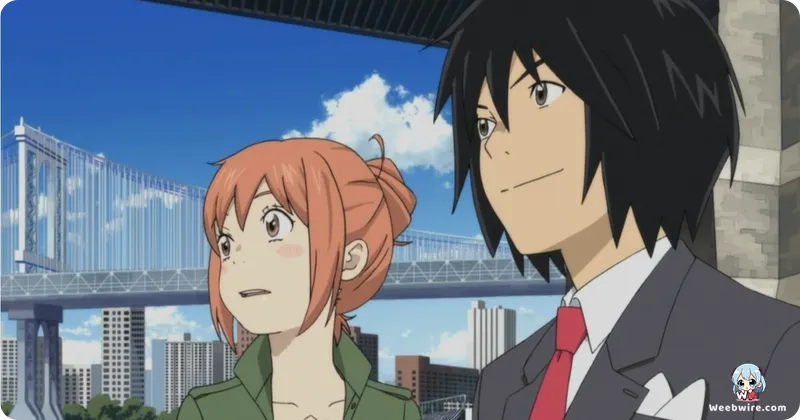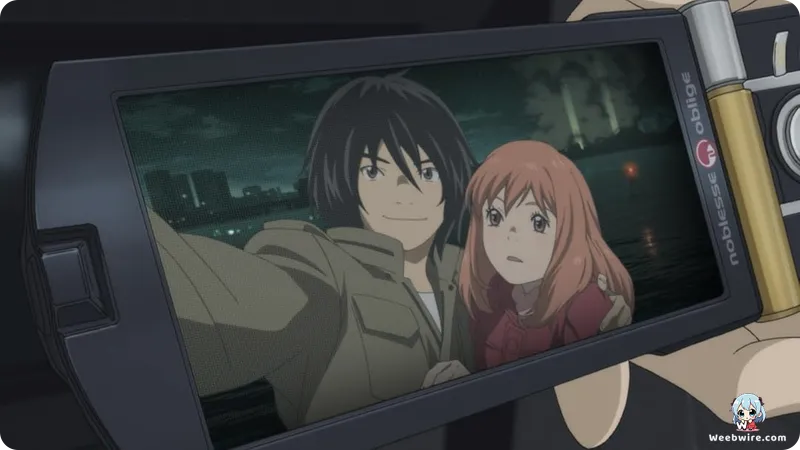Decade On: The Enduring Legacy and Untold Secrets of 'Eden of the East the Movie II: Paradise Lost'

Even more than a decade since its initial release, "Eden of the East the Movie II: Paradise Lost" continues to enthrall viewers with its intricate narrative, compelling cast, and profound societal commentary. As the definitive conclusion to the acclaimed "Eden of the East" saga, "Paradise Lost" delivered a resolution that was both deeply gratifying and intellectually stimulating, firmly establishing its unique position within the anime landscape. Beyond its surface-level thrill of a high-stakes game to rescue Japan, the film and indeed the entire franchise is rich with fascinating insights, deliberate creative choices, and layered thematic depth that often elude casual observation. This exclusive article unearths some of the lesser-known facts and essential trivia surrounding this extraordinary anime, shining a spotlight on the brilliance underpinning its conceptualization and masterful execution.
Kenji Kamiyama's Visionary Direction
At the core of "Eden of the East" lies the visionary direction and writing of Kenji Kamiyama. Admirers of his prior works, particularly the groundbreaking "Ghost in the Shell: Stand Alone Complex" series, will instantly recognize Kamiyama's distinctive style: complex narratives interwoven with philosophical inquiries, meticulous world-building, and incisive social critiques. Kamiyama is celebrated for his ability to craft stories that resonate profoundly with contemporary global issues, and "Eden of the East" exemplifies this. The series and its subsequent cinematic features delve into themes of collective societal responsibility, the inherent dangers of advanced technology, the concept of unified action, and the quest for individual identity in an interconnected world. His strategic decision to develop an original anime, rather than an adaptation, afforded him unparalleled creative autonomy, forging a narrative that feels both acutely relevant and timeless.
Chika Umino's Unique Character Designs
A truly striking element of "Eden of the East" is its character design, masterfully handled by the renowned manga artist Chika Umino. Umino is perhaps most recognized for her contributions to the romantic drama "Honey and Clover," a series characterized by a markedly different tone and visual aesthetic. The ingenious choice to integrate Umino's soft, emotionally expressive character designs into Kamiyama's gritty, realistic, and frequently high-tension universe created a unique visual synergy. This blend produces a captivating dissonance; the characters, despite being embroiled in a life-or-death mission for national salvation, retain a profound humanity and emotional resonance that a more conventional thriller art style might have inadvertently suppressed. This unexpected collaboration between two distinct creative titans culminated in a visual identity that is both unforgettable and a significant contributor to the anime's widespread appeal.
The Philosophical Experiment of the Seleção Game
The central premise of the "Seleção" game transcends a mere plot device; it stands as a brilliant philosophical experiment. Ten unsuspecting individuals are each endowed with 10 billion yen and burdened with the monumental task of saving Japan, accompanied by the chilling stipulation that failure or any perceived deviation from their mission results in their swift elimination by a mysterious 'Supporter'. This concept directly explores the principle of "Noblesse Oblige" the notion that great privilege necessitates great responsibility. However, the anime ingeniously subverts this idea by thrusting responsibility upon ordinary individuals, provoking profound questions about the essence of heroism, the ethics of compelled philanthropy, and the diverse interpretations and methods people might employ to fulfill such a colossal obligation. Each Seleção member, driven by their unique motivations and strategies, symbolizes different societal approaches to crisis management and leadership.

Meticulous Real-World Locations
The anime's unwavering commitment to realism is further exemplified by its meticulously rendered real-world locations. A significant portion of the narrative, especially within the films, unfolds in Washington D.C., featuring precise depictions of iconic landmarks such as the White House, the Lincoln Memorial, and various D.C. thoroughfares. This exacting attention to geographical detail imparts an immersive quality, seamlessly blurring the boundaries between fiction and reality and making the dire stakes of the Seleção game feel incredibly palpable. The animators at Production I.G spared no effort to ensure accuracy, which not only grounds the fantastical elements but also intensifies the sensation of a global conspiracy unfolding in a recognizable world.
The Prescient AI System: Juiz
The advanced artificial intelligence system known as "Juiz" represents yet another fascinating component. Juiz functions as a personal concierge for each Seleção member, capable of fulfilling virtually any request, no matter how extravagant, utilizing the allocated 10 billion yen budget. This concept proved remarkably prescient, anticipating contemporary discussions surrounding the immense power and intricate ethical implications of highly intelligent AI. Juiz sparks critical questions about privacy, pervasive surveillance, and the potential for a benevolent yet omnipotent entity to subtly guide or overtly control human decisions. Within the narrative, it stands as a technological marvel, but simultaneously serves as a subtle cautionary tale about the double-edged sword of advanced technology and unchecked power.
The Strategic Shift to Cinematic Features
The strategic transition from an 11-episode television series to two concluding cinematic features, "King of Eden" and "Paradise Lost," was a deliberate creative decision designed to expand the narrative's scale and scope. This format shift empowered Kamiyama to deliver a more cinematic and grander conclusion, offering a rich, intricately detailed resolution that might have been constrained by the limitations of a standard TV episode structure. The films allowed for more expansive animation, elaborate sequences, and a deeper exploration into the characters' psychological states, culminating in a truly epic finale for Akira Takizawa and Saki Morimi's intertwined journey.
Akira Takizawa's Thematic Amnesia
Akira Takizawa's amnesia is not merely a convenient plot device; it is a fundamental thematic element. Awakening with no recollection of his past, he is compelled to reconstruct his identity while simultaneously being plunged into the perilous Seleção game. This clean slate enables him to approach Japan's crisis with a fresh, unbiased perspective, unburdened by past errors or societal expectations. His profound journey of self-discovery is inextricably linked with his endeavors to save his nation, positioning him as a unique kind of hero who must first comprehend himself to truly grasp his mission.
An Unconventional and Thought-Provoking Ending
Finally, the ending of "Paradise Lost" is famously unconventional, opting for a nuanced and deeply thought-provoking resolution over a bombastic, unequivocally clear-cut victory. This aligns perfectly with the series' philosophical underpinnings, suggesting that genuine transformation and salvation arise not from a singular hero or a grand, decisive gesture, but from collective action, individual accountability, and the continuous effort to forge a better future. It challenges the audience to critically examine their own roles within society, leaving a lasting impression that transcends typical anime conclusions. Production I.G's renowned animation prowess, celebrated for its superior quality and richly detailed environments, further elevates the entire "Eden of the East" saga, ensuring it remains a visually stunning and intellectually stimulating experience that continues to resonate with viewers worldwide.
Credits
Eden of the East the Movie II: Paradise Lost
Author
Kenji Kamiyama
Cover Art
Chika Umino
Studio
Production I.G
Publisher
Fuji TV
Producers





